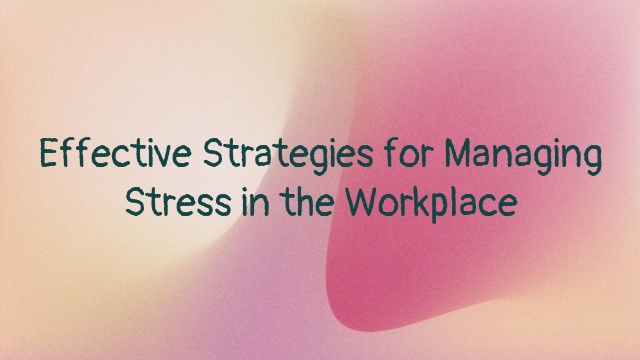
Careers
Effective Strategies for Managing Stress in the Workplace
Stress in the workplace is a common issue that can have negative effects on mental and physical health. Fortunately, there are several effective strategies for managing workplace stress. Here are some of the best tips:
- Identify the source of stress: The first step in managing workplace stress is to identify the source of stress. This can include a heavy workload, difficult coworkers, or a lack of support from management. Once you’ve identified the source of stress, you can take steps to address it.
- Practice relaxation techniques: Relaxation techniques, such as deep breathing, meditation, or yoga, can help reduce stress and promote feelings of calmness and well-being. Consider taking a few minutes each day to practice these techniques.
- Set boundaries: It’s important to set boundaries in the workplace to ensure that work doesn’t spill over into your personal life. This can include setting specific work hours and avoiding work-related activities outside of those hours.
- Take breaks: Taking regular breaks throughout the workday can help reduce stress and improve focus. Consider taking a short walk, doing some stretching, or simply stepping away from your desk for a few minutes to recharge.
- Prioritize self-care: Prioritizing self-care is essential for managing workplace stress. This can include getting enough sleep, eating a healthy diet, and engaging in regular exercise or physical activity.
- Seek support: Don’t be afraid to seek support from coworkers, friends, or family members when dealing with workplace stress. Talking about your feelings can help you feel more supported and less alone.
- Practice time management: Poor time management can be a significant source of workplace stress. Consider using tools like calendars, to-do lists, and time-blocking to manage your workload more effectively.
By implementing these strategies, you can better manage workplace stress and improve your overall well-being. Remember that managing stress is an ongoing process, so be patient and stay committed to making small changes over time.